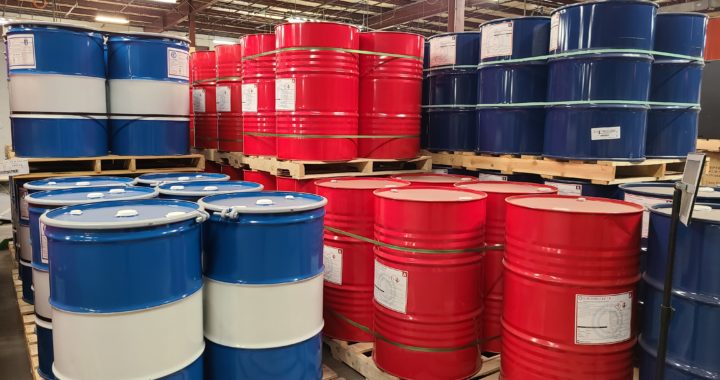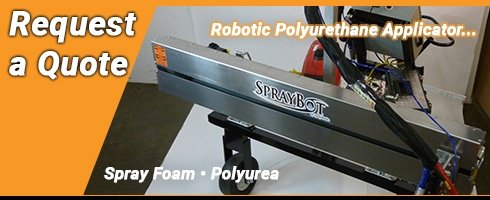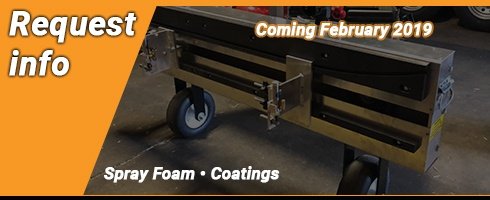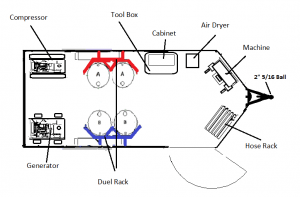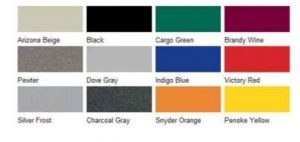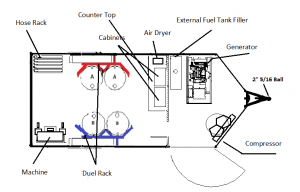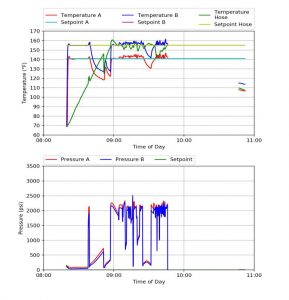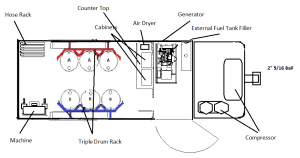The spray foam insulation business is a great investment opportunity for contractors and those looking to start a lucrative venture in a flourishing industry. Spray foam insulation outperforms other types of insulation in longevity, R-value, and sealing ability, and is more environmentally-friendly than traditional insulation. One of the best ways to get started is to search for a spray foam insulation business for sale. First, you’ll want to consider your market and determine the type of equipment you’ll need to complete the jobs you’ll want to do. When you start a spray foam business, you need to know the type of projects you’ll do, find the appropriate equipment and consider the material needs for the equipment you use.
Continue reading
Author Archive: John Davidson
Material Spraying Issues
It’s less common when material will not spray on the ‘A’ side and ‘B’ side at the same time, but when it happens, there could be a number of factors at play. If you find yourself in this position, take a look at these common reasons;
- Proper operation of the pumping system. (execute initial startup checks)
- The product cold, it doesn’t flow properly.
- Failing delivery supply like transfer pump wear or neglect.
- Your regulator could be malfunctioning; Are you getting enough air supply to your Transfer Pump?
- Failing packings from wear or neglect.
- Clogged screens can also cause major issues in proper flow.
- Recent crossover in hose or contamination within the gun itself.
Why Closed Cell Spray Foam is the Best Option for Commercial Roofing
It’s no surprise that roofs get beat up the most, compared to any other part of a building. Structurally, if the roof is not built with a strong application, the result can be disastrous. Spray Foam is a viable alternative to many roofing applications. Having been around for nearly 60 years, spray foam roofing applications have improved over time and displayed their longevity. Here, we discuss some of the benefits of using Closed Cell Foam for roofing applications.
Continue reading
Protect the Workers: Simple guide to safety symbols on boots
There are various types of safety boots and other personal protection equipment designed made and tested for protection from a wide variety of hazards at the workplace or other. Different professions have different hazard risk as well as different levels of risk. These hazards can be breaking the toe or metatarsal bones by falling or rolling objects, slippage, puncture wounds, electrical shock, chemical burns, frostbite and others. In the US, the rated safety shoes carry different symbols showing the protection level and type of protection they provide. They symbolize the results of various tests in accordance to different US and international standards which they have passed.
Weight vs Volume When Mixing
Spray foam material is packaged, sold and shipped on the basis of weight. Therefore, in order to figure the volume of a product packaged in the drum, converting the weight of the product within the drum into gallons is required. To do so, the specific gravity or weight per gallon of material is required information. There is likely to be a difference between manufactures, so confirm with the product supplier to provide this info or if a scale is available, weigh the container first. Specific Gravity and per gallon weight of the liquid for some manufactures are provided on the SDS or product data sheet (formerly MSDS).
Continue reading
Part 2: Check-listing to Save the Job and your Sanity
Last month we discussed the daily check points that should take place before and when arriving at the job. This month, the focus is on-going checklists that should take place less frequently, but consistently. We’ve prepared weekly, monthly, semi-annual, annual and quarterly maintenance inspection lists.
Continue reading
How to Spray Foam a Roof
Beyond having a qualified Spray Mechanic – spray foam roof insulation starts with manufacturing guidelines defined by the material supplier, equipment manufacturer, industry standards, and variables that change from project to project. Below are some of the primary needs as you approach adding spray foam roofing systems to your next project.
Continue reading
Manufactured for Roofing
The Magnificent Membrane
The manufacturing and installation of low slope- polyurethane foam membranes (LS-SPF) takes place simultaneously, resulting in an emphasis is on manufacturing and processing controls. LS-SPF systems are formed by the resulting reaction created between mixing two liquid chemical components “A” and “B” while spraying to a prescribed substrate. The two liquids are packaged in individual containers, usually 55 gallon drums. The set, containing 500 lbs of Resin-“B” component and 500 to 550 lbs. Iso-“A” – are sold by the pound. They are processed in a 1:1 mix ratio or mixed equally in parts by means of plural component airless spray. Similar to airless spray painting and coating applications, the two materials are kept separate just prior to spray applying to the prepared surface. From the drums, the two liquid components are displaced or transferred equally from their individual containers to a processing machine called a proportioning unit for its ability to place both products under relatively equal pressure (proportioned equally). The proportioning unit is equipped with individual pumps and heaters that places the components under “prescribed” relatively equal, pressure (1000-2000 psi) and heat (110 to 160 degrees f).
Part 1: Check-listing to Save the Job and your Sanity
15 Most Important Steps on your Job-site
How many times has the crew shown up for work, got into the vehicle, turned the key on and drove off to the job with your spray foam rig? Every day, right? What about the times you received that dreaded phone call, “the machine or equipment is not working, it was working yesterday” or “we need more parts and can’t work today.” Sound familiar? Implementing some standard procedures and guide lines will help minimize down time and help transform your crew into a professional spray foam production team.
Continue reading
The Importance of Spray Gun Cleaning
With over 100 years of combined experience in the spray foam industry, SprayWorks is the leading supplier of spray foam equipment. We are dedicated to making sure your business has everything you need to get started when it comes to spray foam, and to grow well into the future.
A major component of a successful spray foam business is ensuring your equipment is in tip-top condition and is ready to tackle any job. This means regular spray gun cleaning as well as maintenance on its assorted parts. By Understanding how to clean a spray gun, you’ll be able to keep it in great condition for many years to come.

